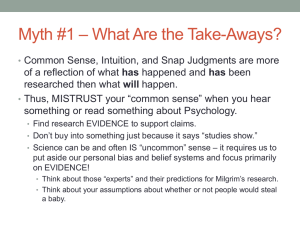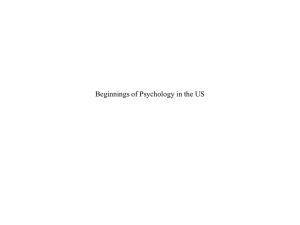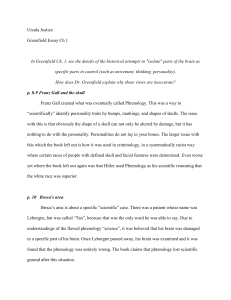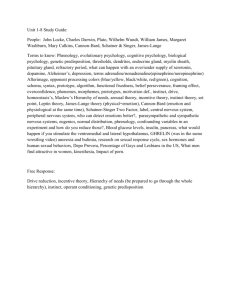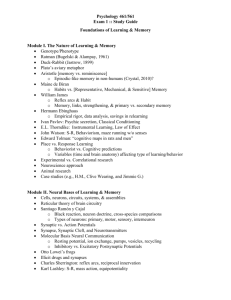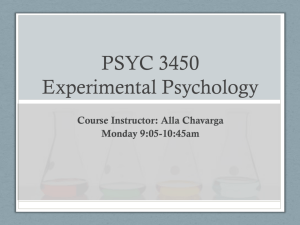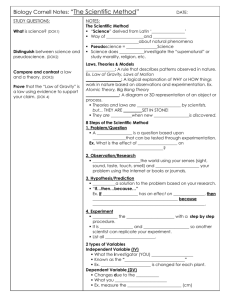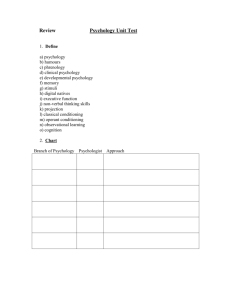Myth #2: Psychology is NOT a science
advertisement
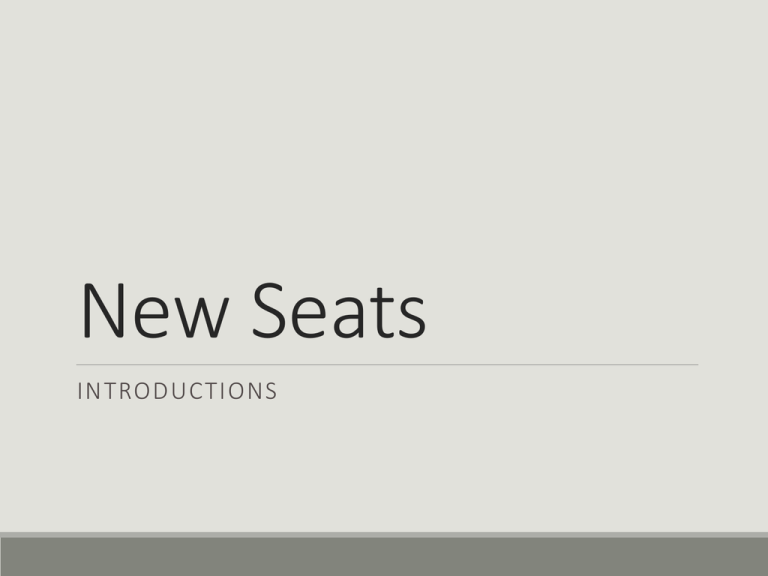
New Seats INTRODUCTIONS Starter/Rewind 1. Daily Personality Quizzes Fun/No Make-up – participation only 3 Points Each ◦ 1 point TITLE ◦ 1 point DATE ◦ 1 point answered/scored You may record more than one per page. DUE TEST DATES 2. Rewind Reminders/Rewind Every Day to Start Class Points Deducted (checking today – quiz) Please be PROACTIVE, not REACTIVE Sign up for reminders (if you haven’t) ◦ ◦ ◦ ◦ Remind 101 Text: 81010 Message: @feef8 Respond with FULL NAME Disclosure Reflect/Q and A Quiz Classroom tour Wednesday: Name Assignment DUE Notebook DUE (1-2-3) st March 1 $3 Mask Fee DUE Notes Myth #1 • CO M P L E TE A N SW ERS • A DD YO U R OW N E X A MPLES/THOUGHTS • E V E RYTHING CO U N TS – T HESE A R E T HE M A I N P OI N TS 1. Psychology Defined The SCIENTIFIC study of (ology) mental processes and behavior (psyche) 2. Psychomythology Defined The vast body of misconceptions, urban legends, and old wives’ tales regarding Psychology. 3. Phrenology The study of the bumps on your skull and their connection to your personality and mental processes Established by Frantz Gall 1800’s: Phrenology was the rage “Have Your Head Examined!” Still around… “Phrenology is the science which studies the relationships between a person's character and the morphology of the skull…” “Today, much of the criticism against Phrenology can be easily dismissed.” http://www.phrenology.org/intro.html (emphasis added) Problem with phrenology? fMRI Myth #1: Psychology is NOT a science SCIENCE V. PSEUDOSCIENCE 4. SCIENCE is... HOW something is studied, NOT WHAT. Systematic and precise Public, open to scrutiny (peer reviewed journals) Scientists try to rule stuff out, not PROVE. Tentative; MORE is learned over time, changes with evidence (replication) Solving SOLVEALBE problems (“Does God exist?) Advantages: Naturalistic Observation Definition: Behavior is studied in its natural environment without interference from the researcher ◦ ◦ ◦ ◦ Spontaneous Not a “lab” setting Great ideas for future experimentation https://www.youtube.com/watch?v=zvpG6lkG MVs Disadvantages ◦ Observer/Experimenter Bias ◦ One Chance – think spontaneous moment! Advantages: Case Study Definition: Intensive analysis and description of an individual or a small group. A lot of information. A rich description. Leads to ideas for future study. Disadvantages: Observer/Experimenter Bias Difficult to generalize beyond single case studied https://www.youtube.com/watch?v=_6Fv_PlKYU Positive Correlation – Two variables “vary” or change together Correlational Research Method Definition: Used to clarify the strength of a relationship among variables. Negative Correlation – Two variables “vary” or change in opposite directions Dark clouds and rain Consumption of hot cocoa and temperature Study time and scores *Can only say the relationship exists and how strong it is, not WHY the relationship is there. Smoking and lifespan Late Start and tardies 1st/5th periods Experimental Method Definition: A defined study, usually done in a laboratory setting. Test two variables using subjects and the scientific method. *Can prove WHY and HOW the two variables relate. Hypothesis: An explanation about the connection between two variables in an experiment. The beginning of the research process. Independent Variable (IV): The controlled or manipulated variable. The “thing” that is given or not given to the subjects. Dependent Variable (DV): The effect (behavior or mental process) being observed that is caused by the IV. Experimental Group (EG): Manipulated group Receives the treatment Receives the IV Control Group (CG): Comparison Group Does not receive the IV May receive a placebo (looks like IV, but is not have the same effect) Experimentation Practice: Identify the Independent Variables (IV), Dependent Variables (DV), Experimental Groups (EG), and Control Groups (CG) 1. Developmental psychologists want to know if exposing children to public television improves their reading skills. IV – DV – EG – CG – 2. Behavioral psychologists want to know if giving people compliments while they work, will make them work harder on an assembly line. IV – DV – EG – CG – 3. A clinical psychologist wants to know whether people who have psychotherapy are more or less likely to have problems in the future. IV – DV – EG – CG – 4. A social psychologist wants to know whether being rude to people tends to make them less cooperative. IV – DV – EG – CG – 6. Pseudoscience is… “Pseudo” means fake Aimed at the general public Research cannot be reproduced (replicated), not precise The “file drawer” problem Skeptics must demonstrate proof; fixed ideas Appeals to belief or faith; relies on personal testimony 7. Example: Therapeutic Touch http://www.youtube.com/watch?v=mNoRxCRJ-Y0 Stossel Testing Therapeutic Touch Other Examples of Pseudoscience… 8. How do you explain these? Must Be Aliens!! Spaceships landing Invisible energy beams from space Horny/busy hedgehogs… Electrically charged air currents (dust devils’ “Plasma Vortex Theory”)? OR … 5. Occam’s Razor (the simplest explanation is probably the best) Man-made hoaxes Doug & Dave, 1991 Other Pseudoscience? 9. Polygraph machines…aka “lie detectors” Measures: heart rate blood pressure respiratory rate sweatiness (fingers) infers “increase” means deception Can You Detect a Liar? Not the first method! *Rice test Charles Moulton Marston 10. Polygraphs…research says… #1: There is no evidence that any pattern of physiological reactions is unique to deception ◦ An honest person may be nervous when answering truthfully ◦ A dishonest person may be non-anxious #2: Countermeasures can be effective ◦ Counting backwards, tack in shoe, breathing changes #3: Significant error rates ◦ Not admissible in a court of law as evidence Discovering Psychology #4: Placebo-like effects Placebo: A substance or situation that is deceives an individual into “feeling” an effect. By “thinking” you’ve been affected, you might actually find a change. The person believes that the test/pill works, so it does! “I really did feel tingling …” Understanding Research: #2 (start at 20:19) http://www.learner.org/resources/series138.html# Really “Arousal” Detectors, not “Lie” Detectors But, 67% of American public believe they are effective Good for anything? “Guilty knowledge test” Seldom admissible in court Makes for good drama and ratings! 12. Do you think they should be used for hiring/firing? As evidence in a court case? Explain. Detecting Lies: Microexpressions 13. Dr. Paul Ekman Brief facial expression (1/25th sec.); occurs when person either deliberately or unconsciously conceals an emotion being felt. Microexpressions
